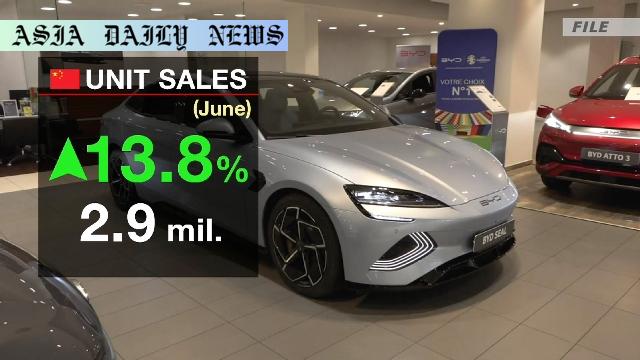New Energy Vehicles drive China’s vehicle sales growth.
- Key Point 1: China’s vehicle sales grew for the fifth consecutive month in June.
- Key Point 2: New Energy Vehicles, including electric and plug-in hybrids, saw a 26.7% surge in sales.
- Key Point 3: New Energy Vehicles accounted for 45.8% of overall vehicle sales.
- Key Point 4: Government trade-in incentives played a key role in driving demand.

China’s Vehicle Market Recovers with Sustained Growth
China’s automotive market displayed a strong recovery in June, as new vehicle sales rose for the fifth consecutive month. According to data provided by the China Association of Automobile Manufacturers, total vehicle sales for the month reached 2.94 million units, representing a 13.8% increase compared to the same period last year. This growth reflects the ongoing recovery of China’s economy, aided by government-backed policies and incentives targeted at promoting sustainable automotive technologies.
One of the key drivers of this growth has been the impressive performance of New Energy Vehicles (NEVs). These models, including electric vehicles (EVs) and plug-in hybrids, have registered a significant 26.7% surge in sales during June alone. The NEV category now accounts for a sizeable 45.8% of overall vehicle sales, highlighting how consumer preferences are gradually shifting towards greener and more efficient transportation options. Government initiatives, such as trade-in incentives, have played a pivotal role in stimulating consumer interest and fostering this growth.
The Role of Incentives in Driving New Energy Vehicle Sales
The Chinese government has been proactive in its efforts to transition towards a more eco-friendly automotive market. Subsidies for trading in older vehicles, combined with financial incentives for buying electric or plug-in hybrid models, have significantly boosted the uptake of New Energy Vehicles. In parallel, advancements in battery technology and charging infrastructure have made these cars more appealing to the average consumer, addressing concerns about range and convenience. These developments have solidified China’s position as a global leader in the NEV sector.
Despite these impressive gains, the potential implications of external factors, such as the Trump administration’s tariffs on Chinese auto exports, remain uncertain. While domestic sales are thriving, the tariffs could impact the export performance of Chinese vehicles, potentially affecting the overall growth trajectory of the auto industry.
Future Prospects for China’s Automotive Industry
The future of China’s automotive market appears promising, buoyed by the strong performance of New Energy Vehicles. The increasing consumer preference for environmentally conscious solutions aligns well with the government’s long-term goals of reducing carbon emissions. Moreover, as automakers continue to invest in research and development, innovations in the NEV space are likely to accelerate, further transforming the industry.
However, challenges remain, particularly on the international front. The imposition of tariffs and potential geopolitical tensions could pose headwinds for China’s export ambitions. Additionally, ensuring that domestic production keeps pace with rising demand while maintaining high quality will require careful policy planning and industry-wide coordination.



Commentary
China’s Strategic Push Towards Sustainable Transportation
China’s commitment to becoming a global leader in the New Energy Vehicle sector is evident in recent sales figures. The 13.8% year-on-year growth in June’s overall vehicle sales, largely driven by a significant 26.7% surge in NEV sales, signals a remarkable shift in consumer preferences. This success can be attributed not only to the increasing environmental awareness among consumers but also to well-structured government policies that encourage the adoption of green automotive technologies.
Government Policies as Catalysts for Change
One of the most commendable aspects of China’s strategy is its focus on comprehensive and supportive policies. Incentives such as subsidies for trading in older combustion-engine vehicles and financial benefits for purchasing NEVs have given consumers a strong reason to make the switch. Additionally, infrastructure development, especially investments in charging stations, has played a pivotal role in addressing range-related concerns for EV users. These developments demonstrate China’s forward-thinking approach and underline its focus on creating long-term solutions for sustainable transportation.
The Need for a Balanced Approach Amid Challenges
While the current trends are undoubtedly positive, challenges remain. The global automotive market is volatile, with potential disruptions arising from trade policies and geopolitical tensions. For instance, the Trump administration’s tariffs on Chinese auto imports could affect export sales. Domestically, manufacturers must also ensure that they maintain high standards to meet consumer expectations, particularly when demand for NEVs continues to grow.
In conclusion, China’s ongoing success in the NEV space is a testament to its strategic vision and proactive measures. However, the path forward will require a balanced approach, taking into account both domestic and international market dynamics. With clear policy frameworks and an unwavering commitment to innovation, China is poised to remain at the forefront of the global transition to eco-friendly transportation.